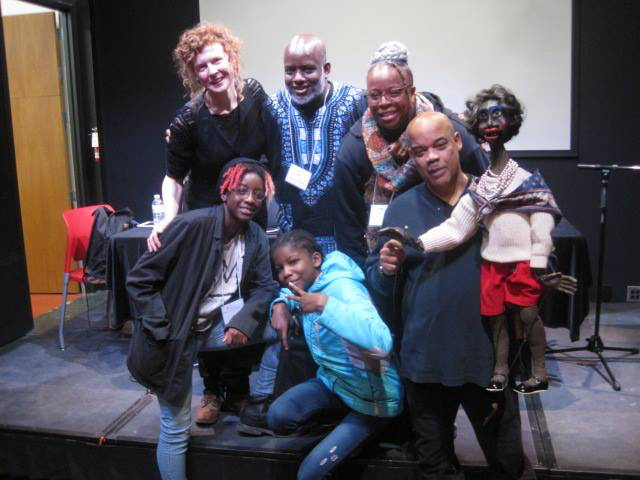Attending the Living Objects: African American Puppetry Symposium and Conference
/by Trudi Cohen
I had the pleasure of attending two of the four days of the Ballard Institute and Museum of Puppetry’s Living Objects: African-American Puppetry Symposium and Conference, co-curated by Drs. Paulette Richards and John Bell (full disclosure—my husband). This gathering accompanied an exhibit which is currently on display at the Ballard Museum, University of Connecticut, through April 7th.
The Symposium portion of the gathering included three full days of panel discussions, addressing topics such as Minstrel Performance, Puppetry and Community and Afro-Diasporic Storytelling, featuring scholars, teachers and practitioners sharing their experiences, research, and ideas. The Festival portion included performances by African-American puppeteers with diverse styles and themes.
Edna Bland in The Greatest Love Story Ever Told
The Festival and Exhibit span an eclectic range of puppet genres and performance styles – including shadow, marionette, rod, bunraku, over-life-size figures, an evening of ventriloquism, a Sunday morning of Gospel Puppetry, screenings of contemporary films, and a revival performance by the legendary Crowtations. The powerful thread linking the artists and scholars is their shared passion for identifying a common cultural heritage, one whose history is strongly rooted in African mask and object ritual, and was savagely severed by slavery. Both the exhibit and the Festival put a spotlight on the beauty and struggles they share. And I sensed joy among them, in the chance to come together, to discover both common histories and widely differing puppetry styles.
I was told that this is the first such exhibit since one produced by the Center for Puppetry Arts 25 years ago. As Brad Brewer said, let’s not have to wait another 25 years for similar recognition!
Paulette Richards says that the Living Objects exhibition “cannot yield a definitive statement of what African American puppetry is,” but it can offer “a fresh perspective on African American experience…African-American puppetry is exultant even when it addresses painful themes such as the legacy of slavery or systemic violence against black men.” And, “gathering these prismatic, complex, and exultant perspectives together opens a space for reflection on how object performance nurtures the human spirit.”
I felt privileged to be in that space, and I believe that other participants felt the same – a space which nurtured my spirit and educated my understanding of the African diaspora.
If you can get to UConn before the exhibit closes on April 7th, I encourage you to go see it. If not, extensive documentation of the exhibit and (coming soon) symposium is posted on the exhibit website.
Participants from Baltimore. From left to right: Valeska Populoh, Dirk Joseph, Azaria Joseph, Sequoia Joseph, Sheila Gaskins, and Schroeder Cherry.






